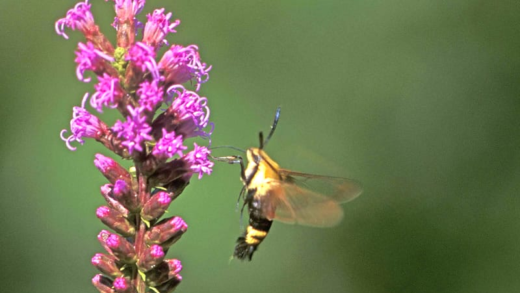Mad honey, known for its psychoactive properties due to grayanotoxins, has a rich history of medicinal and recreational uses. Historically, it served as a remedy for pain and digestive issues, while its recreational use continues today. The possibility of mad honey being classified as a bioweapon raises ethical concerns. Safe consumption is crucial; starting with small doses and knowing the source are essential precautions.
What is Mad Honey? A Simple Explanation
Mad honey is a unique type of honey that contains psychoactive properties, primarily due to the presence of grayanotoxins. These toxins are derived from the nectar of specific plants, particularly those in the Rhododendron family. Unlike regular honey, which is safe for consumption, mad honey can induce various effects, including hallucinations and altered states of consciousness. This honey has been used for centuries in certain cultures for its mind-altering properties.
The Bees Behind Mad Honey: Which Species Produce It?
Mad honey is produced by specific species of bees, most notably the Apis dorsata, also known as the giant honeybee. These bees gather nectar from the flowers of plants that contain grayanotoxins. The process of making mad honey is similar to that of regular honey, but the choice of nectar source is what sets mad honey apart. The honey produced by these bees can vary significantly in its potency based on the location and the types of plants available to them.
The Nectar Source: What Makes Mad Honey Unique?
The uniqueness of mad honey lies in its nectar source. The primary plants that contribute to mad honey production are various species of Rhododendron. These plants contain grayanotoxins, which are responsible for the honey’s psychoactive effects. When bees collect nectar from these flowers, they inadvertently incorporate these toxins into the honey. This results in a product that is not only sweet but also has the potential to cause hallucinations and other effects when consumed in moderation.
The Effects of Mad Honey: What Happens When You Consume It?
Mad honey can induce various effects when consumed, primarily due to its grayanotoxin content. In small doses, individuals may experience:
- Mild Euphoria: A sense of well-being or happiness.
- Altered Perception: Changes in sensory perception, often heightening colors and sounds.
- Relaxation: A calming effect that can help reduce anxiety.
These effects can vary based on the amount consumed and the individual’s tolerance. It’s essential to note that while some may seek these effects recreationally, the experience can be unpredictable. For example, what feels euphoric for one person might lead to discomfort for another.
Hallucinations and Mad Honey: How Does It Work?
Hallucinations associated with mad honey are primarily caused by grayanotoxins. These compounds interfere with the normal function of sodium channels in nerve cells, leading to altered neuronal activity. As a result, consumers may experience:
- Visual Distortions: Seeing patterns or colors that aren’t present.
- Auditory Hallucinations: Hearing sounds or voices without any external source.
- Feelings of Detachment: A sense of disconnect from reality or one’s body.
These effects can be intriguing but also alarming, making it crucial for users to understand what they’re consuming. The experience can vary significantly depending on the individual and the dose, making moderation key.
Risks of Overindulgence: What Happens with Large Amounts?
Consuming large amounts of mad honey poses significant risks. The effects can escalate from mild euphoria to severe toxicity. Risks include:
- Nausea and Vomiting: Common symptoms of overconsumption.
- Confusion and Disorientation: Difficulty in thinking clearly or understanding surroundings.
- Cardiac Issues: Increased heart rate or irregular heartbeats.
- Seizures: In extreme cases, excessive intake can lead to seizures.
It’s vital to approach mad honey with caution, as the fine line between enjoyment and danger can be easily crossed. Users should always be aware of their limits and consider the potential health risks involved.
Historical Medicinal Uses of Mad Honey: A Look Back
Mad honey has been historically revered for its medicinal properties, particularly in regions where it is naturally produced. This unique honey has been used for various ailments, showcasing its importance in traditional medicine. Some historical uses include:
- Pain Relief: Ancient cultures utilized mad honey as a remedy for pain relief, particularly for headaches and joint pain.
- Digestive Issues: It was often consumed to alleviate gastrointestinal problems, such as indigestion and ulcers.
- Enhancing Mood: People believed that mad honey could elevate mood and help combat depression, thanks to its euphoric effects.
In places like Turkey and Nepal, mad honey has been a staple in traditional practices, often consumed during rituals or special occasions. The historical significance of mad honey reflects its unique place in cultural medicine, revealing how societies have utilized natural resources for health and wellness.
Recreational Uses of Mad Honey: Past and Present
Mad honey has found its way into recreational use, particularly among those seeking its psychoactive effects. Historically, individuals have used it to enhance social experiences, often during gatherings and celebrations. Today, its recreational appeal continues, with enthusiasts seeking:
- Altered States: Many users consume mad honey for its mind-altering properties, aiming to experience euphoria or hallucinations.
- Natural High: The honey is considered a natural alternative to synthetic drugs, attracting those looking for a unique experience.
- Cultural Experiences: In certain cultures, mad honey is still used in traditional ceremonies, adding a layer of cultural significance to its consumption.
Despite its recreational use, caution is advised. Users must be aware of the potential for adverse effects and the fine line between enjoyment and toxicity. The allure of mad honey lies in its ability to provide a unique experience, but responsible consumption is essential.
Mad Honey as a Bioweapon: Is It Possible?
The potential for mad honey to be classified as a bioweapon raises intriguing questions. Due to its psychoactive properties, some speculate that mad honey could be weaponized. The key considerations include:
- Grayanotoxins: The compounds in mad honey can induce severe health effects, making it a candidate for misuse.
- Delivery Method: The challenge lies in effectively delivering mad honey to cause widespread effects without detection.
- Legal and Ethical Implications: The use of any substance as a weapon raises significant ethical concerns and legal ramifications.
While the idea may seem far-fetched, the historical context of using natural substances for harm cannot be overlooked. It emphasizes the importance of understanding and respecting the properties of mad honey.
Safe Consumption: Precautions to Take with Mad Honey
When considering mad honey, safety should be the top priority. To minimize risks, individuals should take the following precautions:
- Start Small: Begin with a small amount to gauge individual tolerance.
- Know Your Source: Ensure the mad honey is sourced from reputable suppliers to avoid contamination.
- Avoid Mixing: Refrain from mixing mad honey with alcohol or other substances to prevent adverse effects.
- Consult a Professional: If unsure about its effects, consult a healthcare professional before consumption.
Understanding these precautions can help users enjoy mad honey safely while minimizing potential health risks. Knowledge is key when exploring this intriguing substance.





Comments are closed.